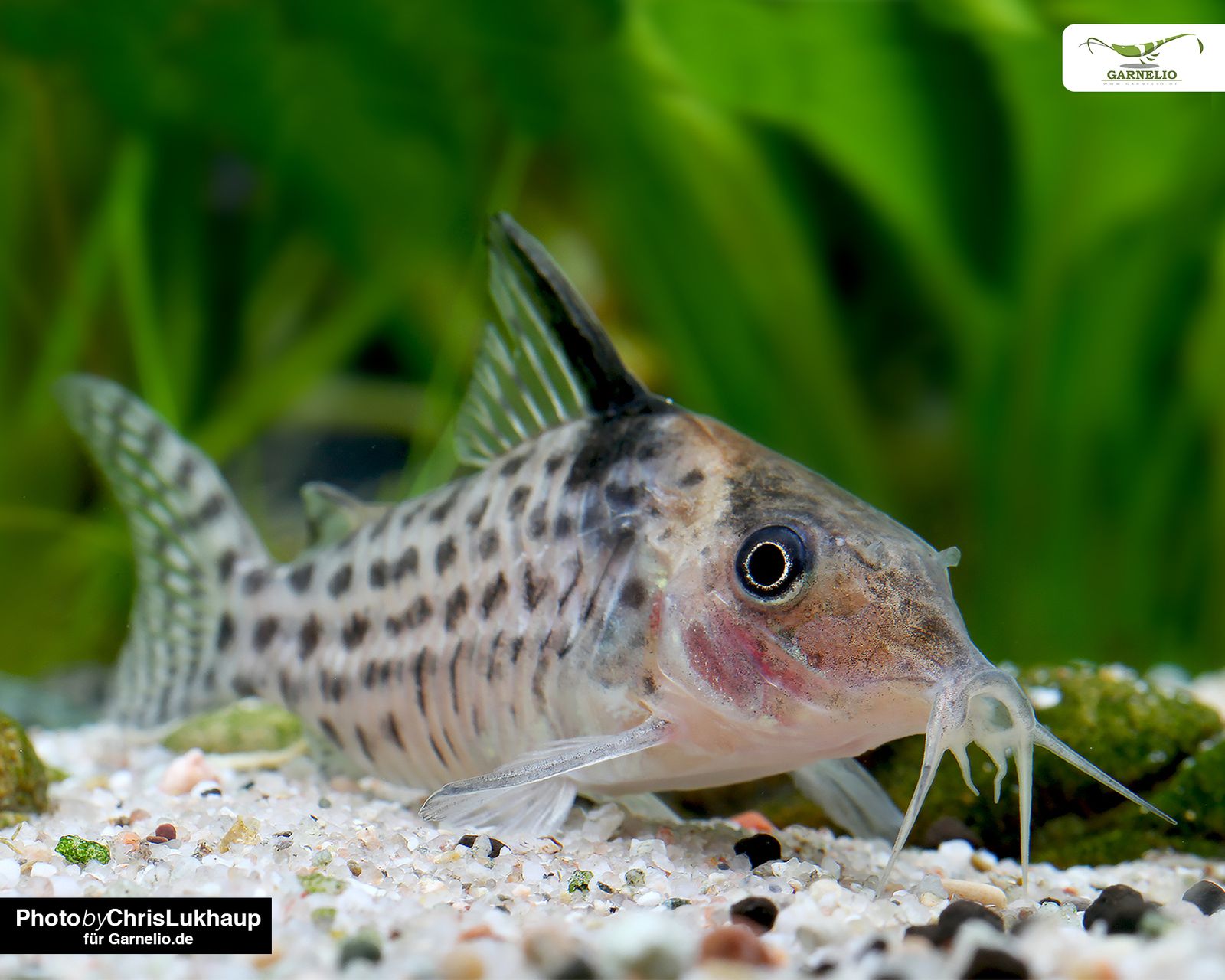Corydoras corydoras genus
The high-backed, usually contrasting and detailed with fine patterns armored catfishes from the genus Corydoras have been present in aquaristics for a long time, and they are popular aquarium fishes. Now and then they are affectionately referred to as Corys. The genus Corydoras comes from South America, where the fish are found in different places depending on the species. As a rule, however, Corydoras live in more or less strongly flowing rivers with rather soft and rather warm (22-30 °C) water in the Amazon region and adjacent areas.
Which substrate for Corydoras?(here to the store)
As bottom fish, Corydoras stay mainly in the lower aquarium regions - with the exception of the Dwarf Corydoras hastatus and Corydoras pygmaeus, which tend to swim in the middle zone. It is often said that Corydoras can injure their typical appendages around the mouth, the so-called barbels, on stony substrate - however, it has been proven that they can also occur in nature on stony substrate and have intact barbels there - therefore, damage to the barbels of Corys in the aquarium is more likely to indicate a bacterial problem. Apart from this, however, the Cory has specialized in chewing through sand for food and literally burrowing in it. A group of Corys, which is up to the eyes in the fine sand, takes it up over the mouth and spits it out over the gills again, is simply worth seeing, and already from therefore one should offer the animals at least one place in the aquarium, where they can live out their natural behavior.
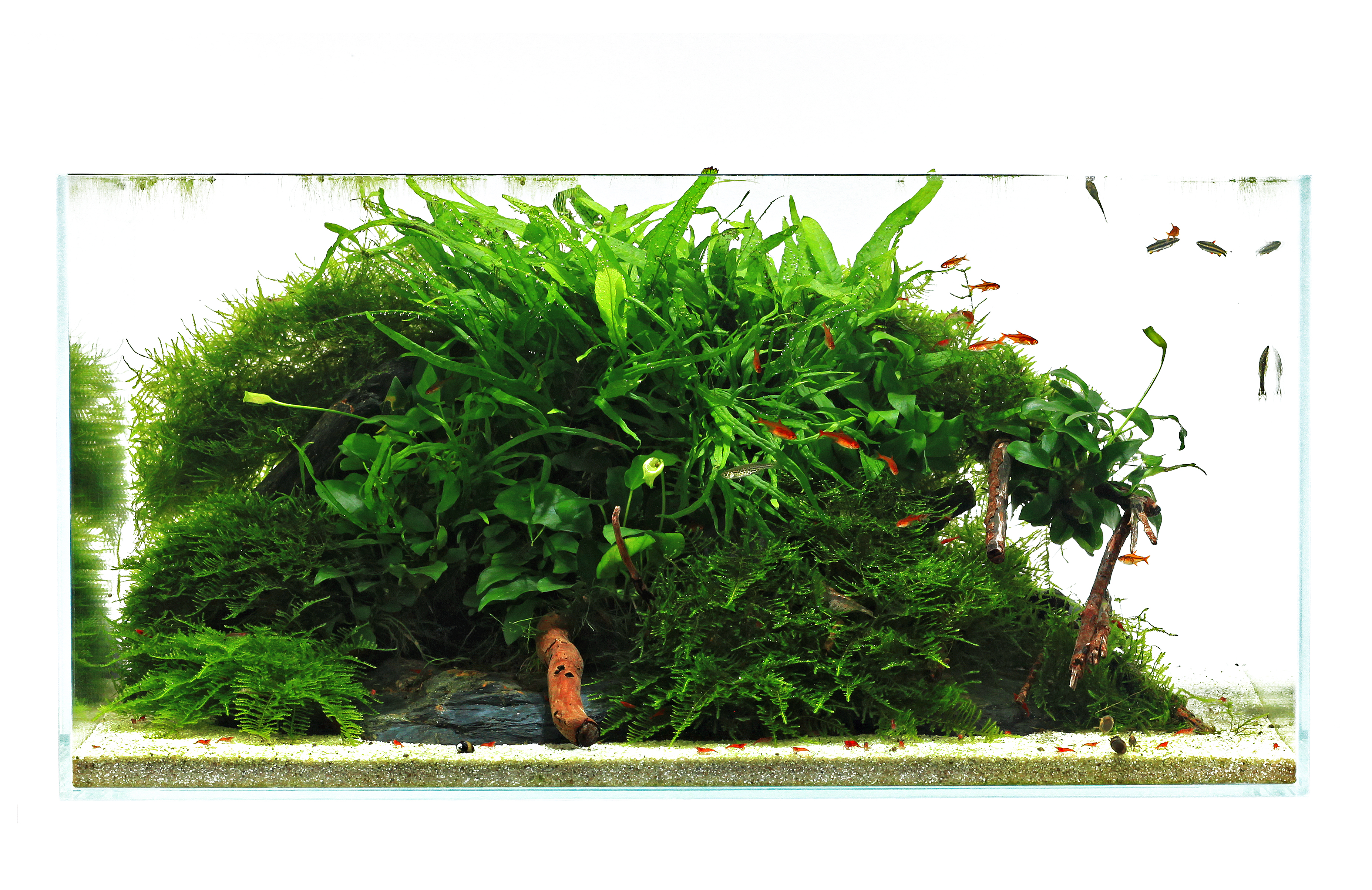
Peculiarity of breathing
Often you can observe that a Corydoras swims very fast and also quite suddenly up to the aquarium surface - but this is not a sign of a problem, but rather natural behavior. Corys are intestinal breathers and need to come up to the water surface from time to time to catch their breath. In addition to taking in oxygen through the gills (which of course also occurs with Corys), the animals swallow air in the process. They are able to absorb the oxygen from the swallowed air through their intestines. This adaptation allows Corydoras to survive in the wild even in waters that become depleted of oxygen, for example, during intense heat or when the waters partially dry out.
Corydoras are social creatures
Corydoras are social group fish (the term schooling fish does not apply to most freshwater fish, because they live mainly in loose groups and not in dense shoals) and need the security that only conspecifics can offer them. A minimum group size is 5, better are more animals. A group of 15-20 Corydoras in an appropriately sized aquarium is fascinating to watch, because the animals then act without shyness and are very lively. The behavior in the group is absolutely interesting to observe and is really fun. Corys kept alone atrophy and no longer show their natural behavior! If kept well, Corys can usually and depending on the species become quite old, 5-10 years are not uncommon.
Aquarium size and equipment(here to the store)
Depending on size and liveliness, Corydoras can already be kept in quite small aquariums of 54-80 liters, but a larger footprint is better and you can then also observe the interactions in the group much better. Many hiding places and a good structure by stones and roots as well as plants are advantageous and give the pretty aquarium fish even more security. In any case, you should make sure that there is enough free floor space and keep in mind when setting up the aquarium that Corys like to burrow in fine substrate and can bring sandy areas into disorder - an aquascape trimmed to the last detail may not be the right environment for Corys. Churned up mulm should simply be siphoned off as part of the regular water changes. Overall, it can be said that Coryfish are very effective at preventing sand from becoming compacted, contributing perfectly to the health of the plants in the aquarium.
Food
Corys are omnivores with a distinct preference for food from animal sources. Sinking live foods such as worms are a classic food, grindal, tubifex or shiner worms are eaten with great pleasure. If there is a Tubifex plague in the aquarium, armored catfish are usually the solution to the problem (given the appropriate aquarium size). Also frozen food is taken very gladly. In addition, armored catfish also take care of the leftovers in the aquarium, they feed on plant remains and, to a lesser extent, algae. A special food for armored catfish (food tablets or cookies) is very suitable, but they also eat conventional flake food or granulated food for aquarium fish in the community aquarium.
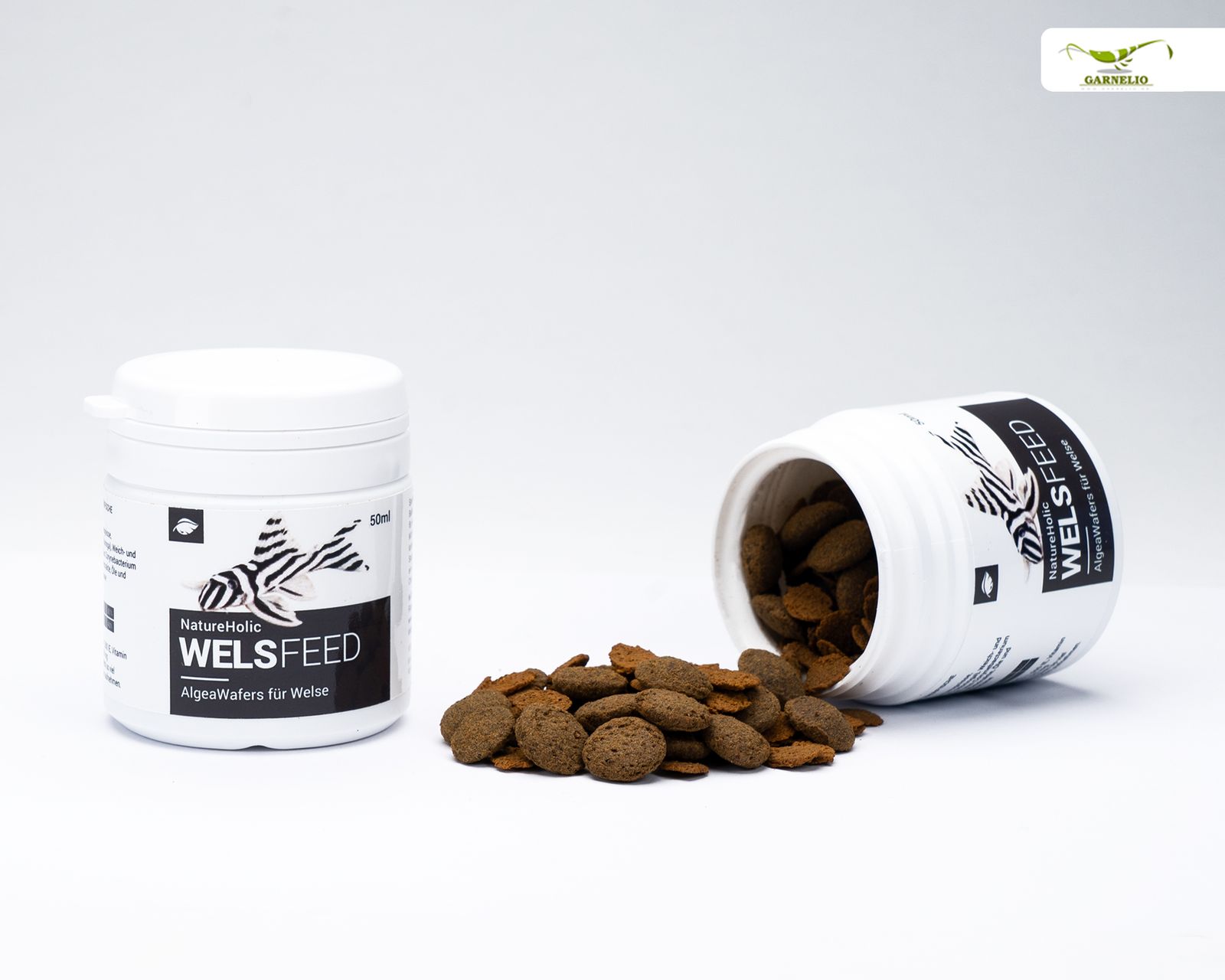
Socialization
Corys are very peaceful fish, both among themselves and with other aquarium fish there are no quarrels here. A group of smaller tetras, livebearers, smaller cichlids from South America or also danios, which have similar requirements in terms of water values, is best suited as a tankmate. Also loricariids are a suitable fish for socialization. Invertebrates like adult shrimps or snails are absolutely left alone, also Corys do not actively chase young shrimps. It is possible, however, that a very careless juvenile shrimp will be eaten, practically walking right into the mouth of the Cory - but this risk is really low. Crayfish, however, not only inhabit the same region in the aquarium, but also occupy the same hiding places such as caves - this is where fights can occur, during which even a dwarf crayfish can injure the delicate fins. Larger crayfish may even catch and eat the corydoras altogether. Also with crabs these problems exist, therefore one should refrain from a socialization here.
Breeding of Corydoras
Breeding of Corydoras is possible in the aquarium more or less without problems. In the community tank, however, is usually no more than a random breeding inside, because the armored catfish larvae can be eaten by the co-inhabitants. The differentiation of the sexes is somewhat tricky, but possible by the physique. Males remain slightly smaller and also slightly less beefy than females.
For a successful breeding you should put a breeding pair or two to three males and two to three females in a breeding aquarium. For this purpose, a baked-in 54-liter aquarium with a thin layer of substrate, a few plants, some moss and roots on which the eggs can be laid is suitable. A couple of trumpet snails eat food remains and keep the bottom clean. Especially at the moss microorganisms settle, which serve as initial food for the armored catfish babies.
Feed the parent fish with rich live foods such as grindal, shiner worms and black mosquito larvae or alternatively with high quality, possibly enriched frozen food. This cranks up the spawning readiness. Trigger courtship and mating with several relatively large water changes with cooler, soft water at intervals of a few days, simulating the rainy season. During the rainy season, a lot of food is flushed into the rivers in the Amazon, and therefore the mating season of the armored catfish also falls into this season. According to some breeding reports on the net, especially sensitive species need a drop in air pressure as a trigger in addition to this water change, so here you should actually adjust the water change according to the weather if necessary.
Shortly before spawning the males drive the females very strongly. This can look very wild, but don't worry! As the pairs approach, they swim head to head. During actual mating, most armored catfish adopt a T-position. This involves the male laying across in front of the female and clamping his mouth with his pelvic fins. The females squeeze out their spawn and hold it in place with their pelvic fins while the males fertilize the eggs. Then the females stick their very strongly adhesive eggs individually to surfaces: the discs, roots, plant leaves, stones ... Usually the clutches gradually have more than 100 eggs. After spawning, the adult fish must be removed from the breeding tank, because they would eat the spawn on the one hand, and the hatched fry on the other.
Alternatively, you can also take out spawn of armored catfish found in the community tank and put them into a rearing tank.
After a few days the small armored catfish larvae hatch. At first they feed on their yolk sac and then on microorganisms in the mulm. Infusoria are suitable as initial food, the small armored catfish are then raised with freshly hatched Artemia nauplii, microworms, cyclops and similar fine live food. Dust food can also be given.
Popular Corydoras for the aquarium
Corydoras pygmaeus - dwarf armored catfish
Silver-gray body with two black longitudinal stripes and marble pattern on the back. Becomes approx. 3 cm long.
the Dwarf Armored Catfish often swims in a shoal and does not live as bottom-bound as other armored catfish.
From 54 liters.
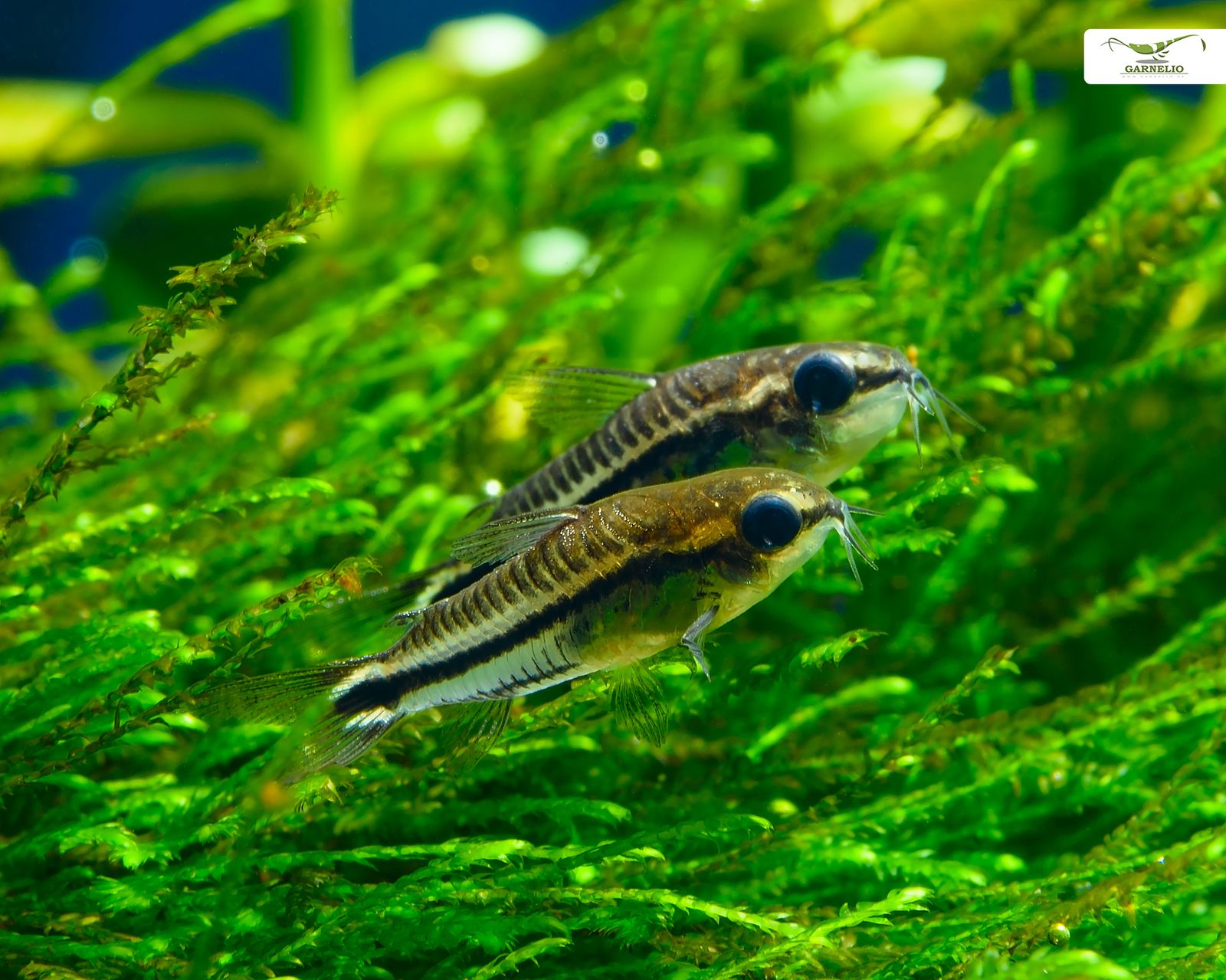
Corydoras hastatus - Sickle Spotted Catfish
Silver-gray to dark gray body with a very fine black longitudinal band that widens at the root of the tail to a black sickle-shaped spot with a white fringe. Grows to about 3 cm in length.
the Sickle Spotted Catfish swims a lot in open water and is not as strongly bottom oriented as other Corys.
From 54 liters.
Corydoras julii - July tank catfish, leopard tank catfish
Silvery shiny, silvery brown, silvery blue or silvery green body with central longitudinal black band of dots, reticulated and straight lines and dots on the body. Dorsal fin with flat black tip, caudal fin black transversely striped, although these stripes may resolve into dots. Body length 6 cm
The Leopard Cory is a very sociable, easy to keep cory catfish.
From 80 liters.
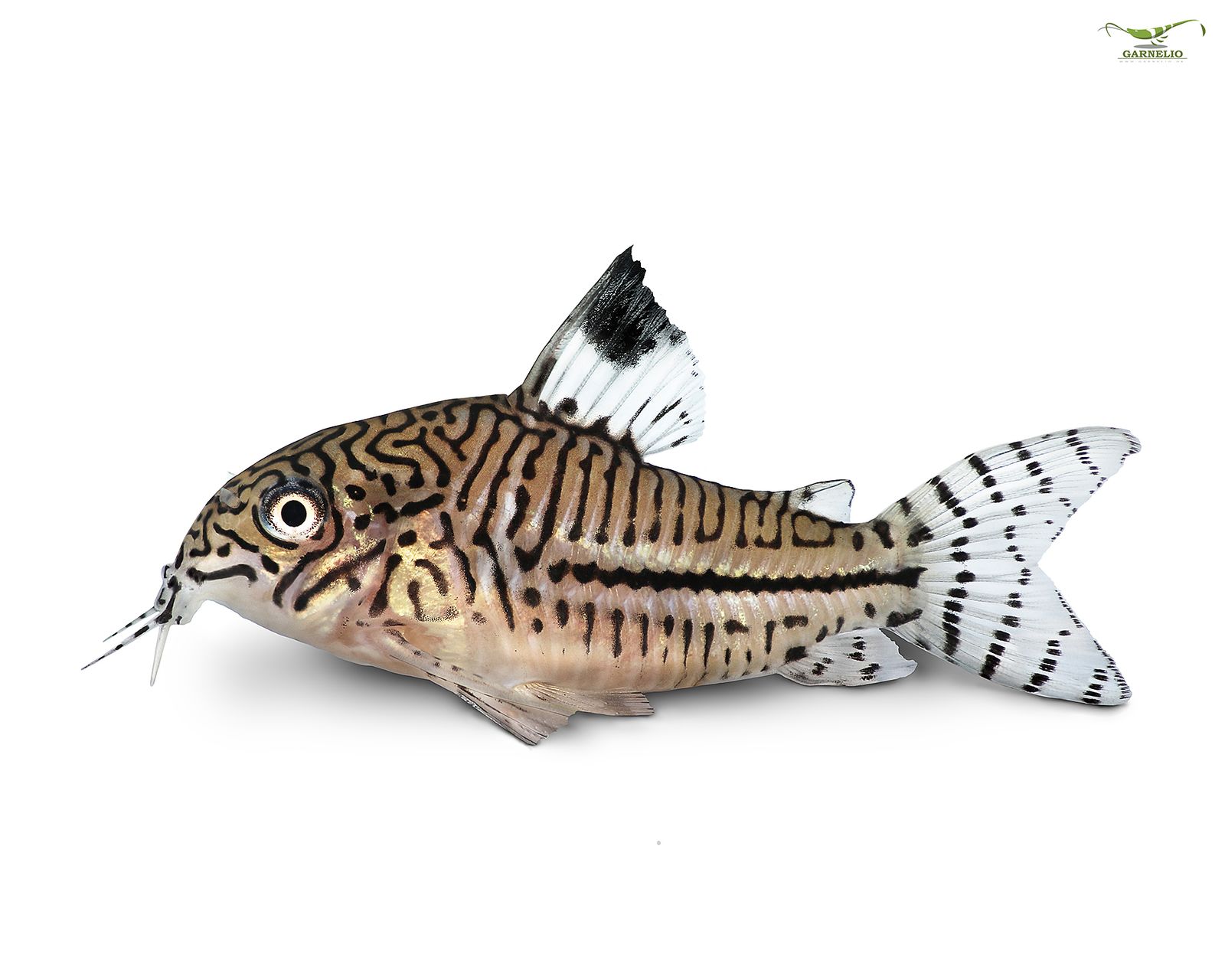
Corydoras Sterbai - red fin armored catfish, Sterbas armored catfish, orange fin armored catfish
Body dark with silvery dots and stripes, pectoral fins orange-yellow to reddish, caudal fin and dorsal fin transversely dark striped. Body length up to 7 cm.one of the most beautiful armored catfishes in aquaristics, with fine color contrasts. The red-finned armored catfish is considered lively, robust and easy to maintain.from 80 liters.
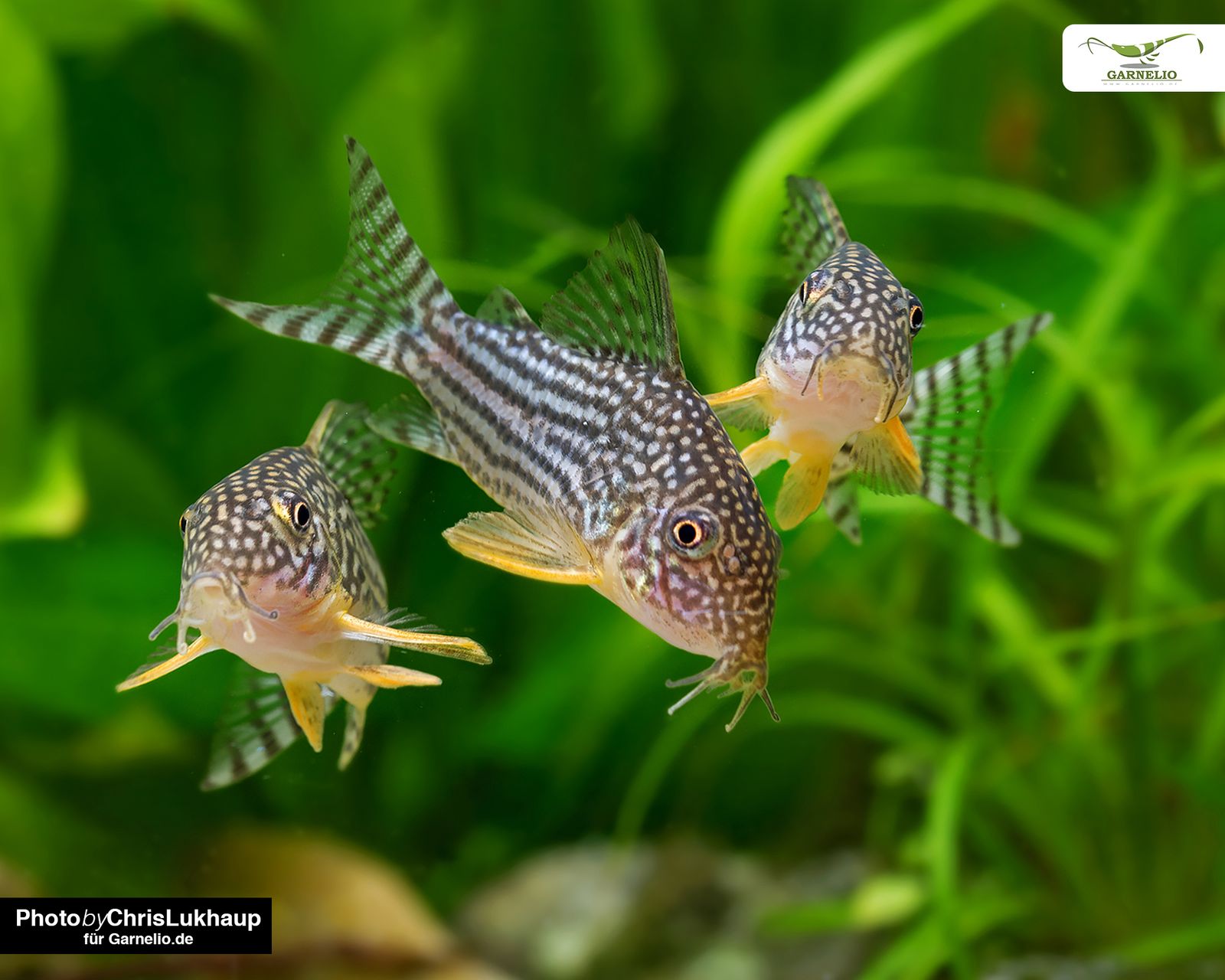
Corydoras davidsandsi - Sands Tank Catfish
Body silvery pink to slightly orange, black clearly defined stripe from top to bottom over eye, black diagonal stripe from base of dorsal fin to lower base of caudal fin. Body length to 6 cm.
Sands Cory is an interestingly colored cory that is considered relatively easy to breed and looks great in the aquarium.
From 54 liters.
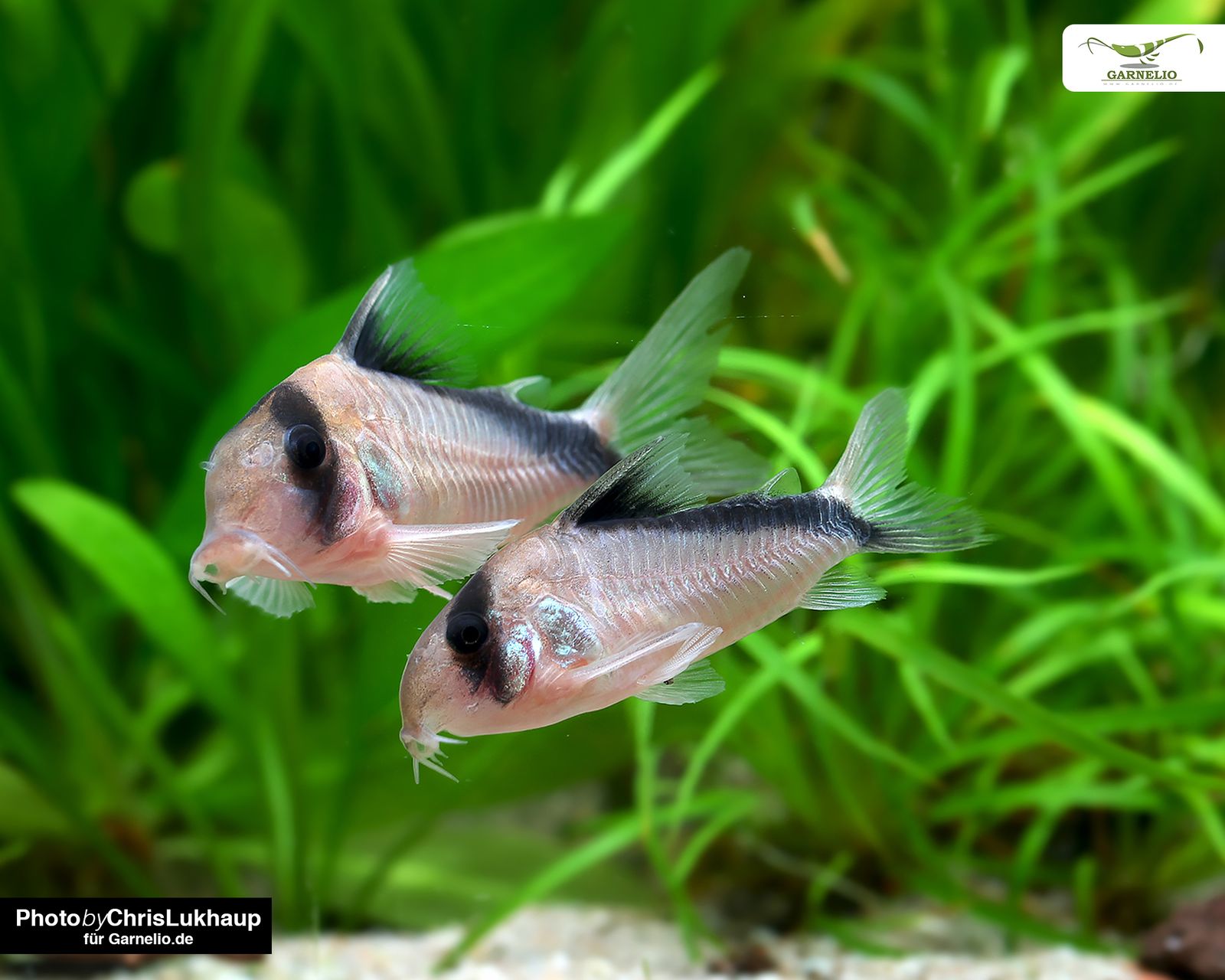
Corydoras trilineatus - Three-bandedCory
Three striking longitudinal stripes along the body: silver - black - silver alternate. Otherwise the body is silvery with a fine dark stripe and dot pattern that can extend into the fins. Body length 6 cm
The Three-banded Corydoras is a particularly beautifully colored Corydoras, which also comes into its own in the community aquarium.
From 54 liters.
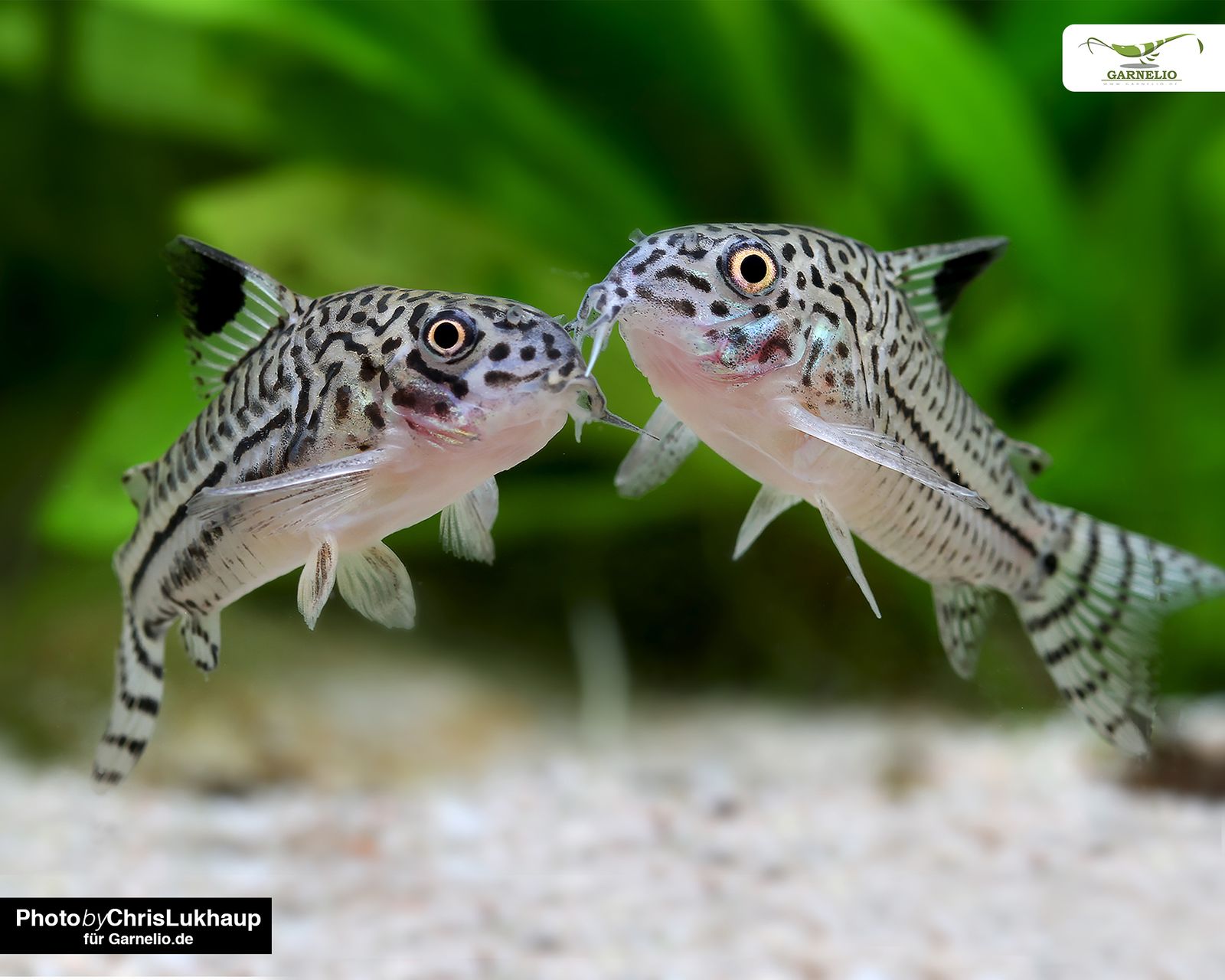
Corydoras sp. (presumably Corydoras aeneus) - Gold Laser Corydoras, Gold Line Corydoras
Body base color orange to golden, broad darker longitudinal stripe along the midline, above a slightly narrower, striking bright orange to golden longitudinal stripe, dark back. Fins are golden yellow to orange transparent. Body length 6 cm.
The unusually colored Gold Laser Corydoras is also known as Gold Line Corydoras. Possibly this is a site variant of Corydoras aeneus, the metal armored catfish.
From 54 liters.
Corydoras elegans - elegant armored catfish, beautiful armored catfish
Base color silvery with metallic shimmer in golden yellow, turquoise blue or brownish, fine, very variable, not sharply defined pattern of dark lines and dots. Fins are often translucent, some specimens have a reticulated pattern in the dorsal fin. Body length 6 cm.
The Elegant or Beautiful Cory is unusually variable and shows very different patterns.
From 54 liters.
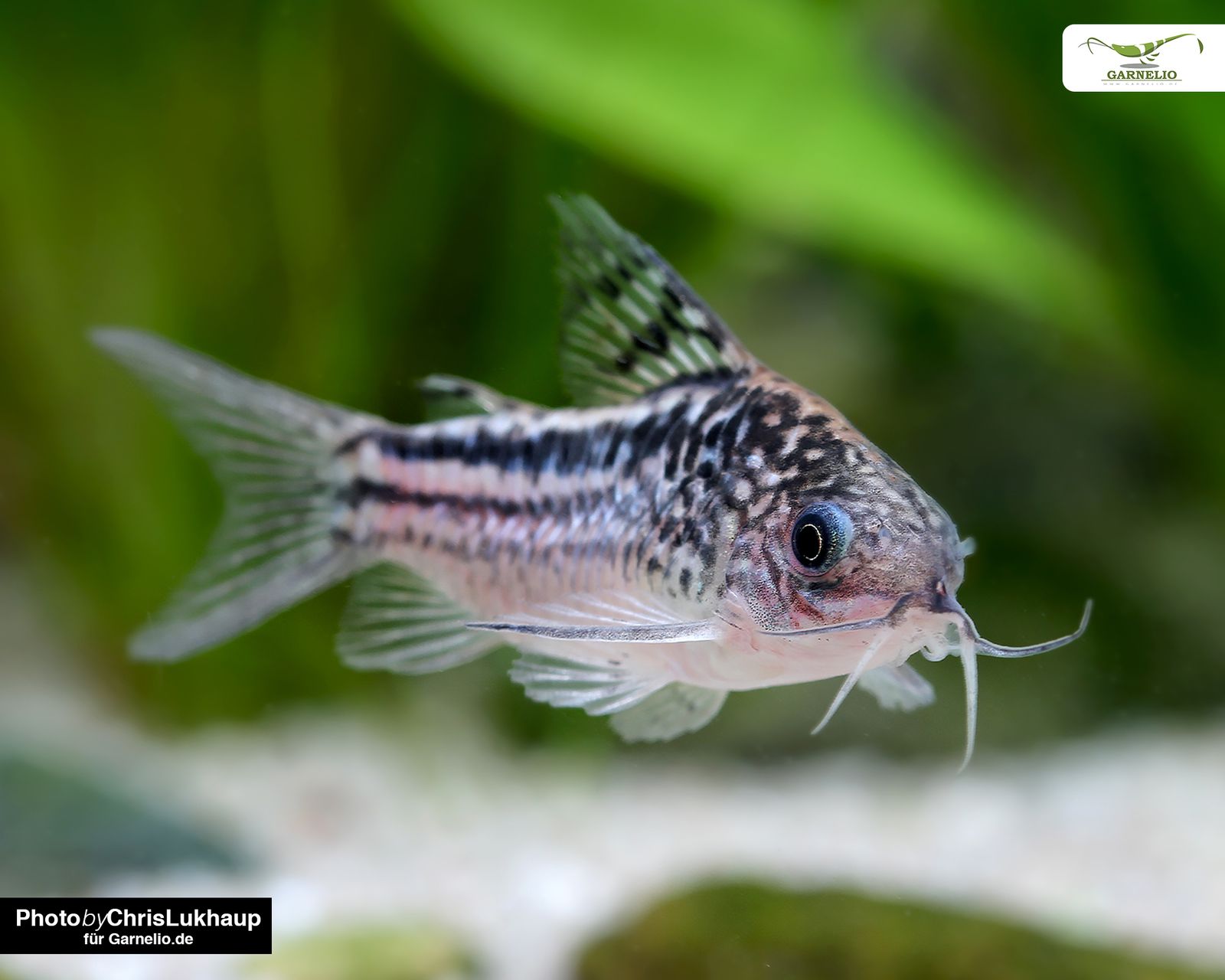
Corydoras agassizi - Agassizis Corydoras, silver stripe corydoras
Funny dot pattern that merges into stripes in places, silvery longitudinal stripe along the middle of the body. Sometimes with dark spot around eye, larger black spot at front end of dorsal fin up to tip. Body length 6 cm.
The silver stripe armored catfish is a very sociable aquarium fish and fascinates by its interesting behavior in the group.
From 54 liters.
